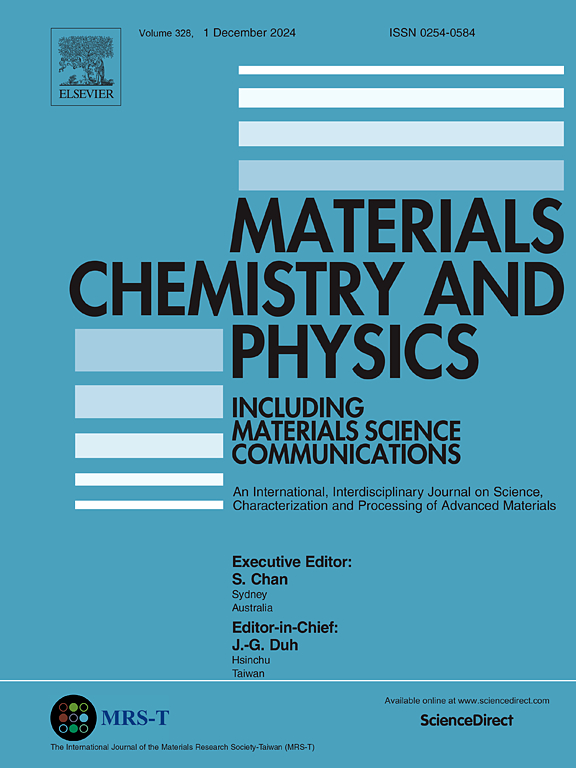Research on the high-temperature wear resistance of columnar network reinforce TiBw/TA15 composites with varying TiB volume fractions
IF 4.3
3区 材料科学
Q2 MATERIALS SCIENCE, MULTIDISCIPLINARY
引用次数: 0
Abstract
In order to further enhance the high-temperature wear resistance of titanium alloys, a columnar network distribution of TiB whiskers was introduced into TA15 titanium alloy to form high wear-resistant TiBw/TA15 composites. High-temperature wear experiments were conducted on composites with varying TiBw volume fractions to investigate the impact of the reinforcing phase volume fraction on the high-temperature wear performance of the composites, as well as the microstructural evolution behavior near the wear surface. Research results indicated that the high-temperature wear surface displayed phenomena such as plowing grooves, micro-cracks, and wear debris. These observations suggested that the high-temperature wear mechanism of the composites involved a combination of abrasive wear, adhesive wear, and fatigue wear. The high-temperature wear resistance of TiBw/TA15 composites increased with the content of the reinforcing phase. Specifically, when the TiBw content was 7.5 vol%, the wear rate of the composites was 8.9 × 10−6 mm3/(N∙m), representing a reduction of 78.4 % compared to that of 2.5 vol% composites. This improvement was attributed to the high concentration of TiB whiskers, which effectively enhanced the deformation resistance and hardness of the composites while refining the matrix grain size. These findings could provide a theoretical foundation for the application of titanium-based composites in high-temperature wear environments.
不同TiB体积分数的柱状网络增强TiBw/TA15复合材料高温耐磨性研究
为了进一步提高钛合金的高温耐磨性,在TA15钛合金中引入柱状网络分布的TiB晶须,形成高耐磨TiBw/TA15复合材料。对不同TiBw体积分数的复合材料进行高温磨损试验,研究增强相体积分数对复合材料高温磨损性能的影响,以及磨损表面附近的组织演化行为。研究结果表明,高温磨损表面出现犁沟、微裂纹、磨损屑等现象。这些结果表明,复合材料的高温磨损机制涉及磨粒磨损、粘着磨损和疲劳磨损的组合。TiBw/TA15复合材料的高温耐磨性随着增强相含量的增加而提高。当TiBw含量为7.5 vol%时,复合材料的磨损率为8.9 × 10−6 mm3/(N∙m),比2.5 vol%的复合材料的磨损率降低了78.4%。这种改善是由于高浓度的TiB晶须在细化基体晶粒的同时,有效地提高了复合材料的抗变形能力和硬度。研究结果可为钛基复合材料在高温磨损环境中的应用提供理论基础。
本文章由计算机程序翻译,如有差异,请以英文原文为准。
求助全文
约1分钟内获得全文
求助全文
来源期刊

Materials Chemistry and Physics
工程技术-材料科学:综合
CiteScore
8.70
自引率
4.30%
发文量
1515
审稿时长
69 days
期刊介绍:
Materials Chemistry and Physics is devoted to short communications, full-length research papers and feature articles on interrelationships among structure, properties, processing and performance of materials. The Editors welcome manuscripts on thin films, surface and interface science, materials degradation and reliability, metallurgy, semiconductors and optoelectronic materials, fine ceramics, magnetics, superconductors, specialty polymers, nano-materials and composite materials.
 求助内容:
求助内容: 应助结果提醒方式:
应助结果提醒方式:


